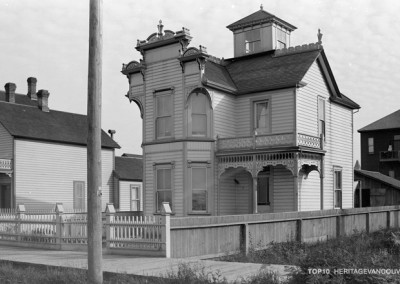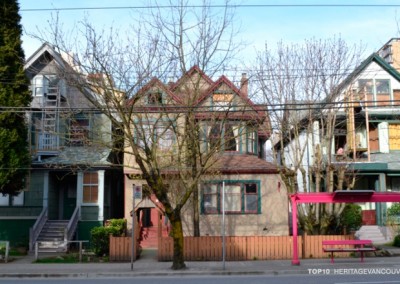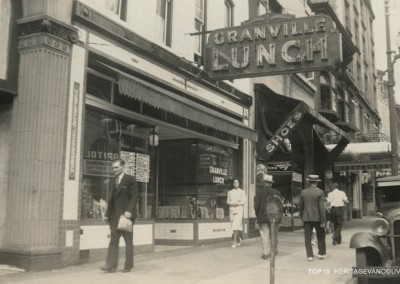The last of our historic movie theatres are closing, leading to the loss of beloved neighbourhood landmarks and cultural spaces.
Update: The Ridge Theatre (1949) was demolished in October 2013
Threat
What is the threat to historic movie theatres?
A number of iconic cinemas in Vancouver’s neighbourhoods have recently closed, or are closing, and are under threat of replacement by new development. Small-scale movie theatres and local venues are being lost rapidly. Not many are left. Since 2006, two have been demolished: the Imperial (Venus) Theatre at 720 Main Street and Varsity Theatre on 10th Avenue. Van East Cinema on Commercial Drive, a past Vancouver International Film Festival venue, shut its doors in 2010 and is already approved for redevelopment as part of a condo project.
Tragically, the Art Deco Hollywood Theatre (3123 West Broadway, 1935-36) and mid-century Ridge Theatre (3131 Arbutus Street, 1949) [demolished Oct 2013] may be heading for demolition unless creative solutions are found to retain these two cultural spaces.
The Hollywood was closed in May 2011, but hope remains for a successful resolution of the future of this gloriously intact movie palace. Dino Bonnis purchased the treasured theatre, and may seek to reopen it. Also, the Vancouver International Film Festival has gone on record as being interested in The Hollywood for screenings if suitable financing can be found.
Cressey Development Group, recent purchaser of Ridge Theatre & Varsity Ridge Bowling Alley, has gone public with plans to demolish the complex for a mixed-use development, but it is early days in the process. The rezoning proposal and design could be changed in response to community concerns. Long beloved in the community, the closures and demolition of The Hollywood and the Ridge would represent a major loss of neighbourhood cultural and community gathering space.
Significance
Why are historic movie theatres significant?
Intimate and independently-run neighbourhood theatres are everyday reminders of the cultural life of Vancouverites of the recent past. When Reginald and Margaret Fairleigh opened The Hollywood in 1935, there were 26 cinemas in operation in the city. Ladies and gentlemen dressed up for movie nights, and were enticed into the theatre by a red and blue sign that flashed “pick o’ the best plays” — a reminder of the time when movies had recently gone “talkie” and were called “photoplays.” The Hollywood’s billboard, faithful in its illumination until the venue’s last day of operations in 2011, is believed to be the first neon sign permanently attached to a building in Vancouver, and one of 19,000 that once graced the city’s streets, as memorialized in the photographs of Fred Herzog.
Listed on the City of Vancouver’s Heritage Register, The Hollywood Theatre is an architectural treasure and one of the few remaining movie theatres from the 1930s. Its architect, Harold Cullerne (1890-1976), designed the concrete, streamlined Art Deco theatre with glamorous, exotic features, such as hieroglyphic decoration at its roofline, a ticket booth of black and gold tile and original neon signage.
Its vintage interior includes a sign reading “loge” pointing the way to balcony seating, and 651 well-worn red plush seats with wooden armrests. The Hollywood Theatre is also a beloved independent venue. Prior to its closure, this single-screen theatre was identified as the oldest family-owned and run cinema in Canada.
The Ridge Theatre [update: demolished Oct 2013] is much loved as a post-war icon and cultural space that is part of community life and the special character of the Kitsilano neighbourhood. The theatre itself has a high monumental entrance, and the dramatic neon theatre sign is an integral part of the design; neon is used throughout the exterior and carried through to the interior as banding as well as indirect cove lighting. A stainless steel ticket booth has ribbed flutes that echo the tubes of neon banding. The entire north wall of the lobby is mirrored, dramatically increasing the visual impact of the space. The lobby has a gold, green and black terrazzo floor. The spacious auditorium has its original raked wooden floor. Concealed uplighting illuminates the wave-like ceiling design, and large ‘seashell’ forms highlight the sides of the stage. The upper rear walls are finished in plaster with a repeated sycamore motif.
Overall, the Ridge Theatre has maintained its original design integrity, and is one of the most dramatic, and intact, early modern interiors in Vancouver.
Both The Hollywood and The Ridge are unique facilities that help to define Vancouver, as envisioned in the City’s Cultural Plan, as “a city of vibrant, creative neighbourhoods”. Finding innovative ways to retain them as local amenities helps to sustain urban vitality and a unique sense of place. If these historic theatres are lost, we are unlikely to see this kind of neighbourhood community space constructed again.
The last of our other historic cinemas include the Dunbar Theatre (4555 Dunbar Street, 1935) and the York (‘Raja’) Theatre (639 Commercial Drive, 1913). Owner Ken Charko has reinvigorated the Dunbar Theatre as an independent theatre through diversification of its use as a rental venue for special events, and investment in new seating and state-of-the-art equipment. In 2011, The City of Vancouver and developer Bruno Wall secured an agreement to restore the York Theatre as a City-owned cultural facility to be programmed with Vancouver East Cultural Centre.
The Dunbar and York Theatre stories show that success is possible, where there is public and private sector commitment to historic theatres as neighbourhood treasures. Other theatres that are still holding on as movie venues include the Park Theatre (3440 Cambie Street, also designed by Kaplan & Sprachman) and the Rio Theatre (1660 East Broadway).
The Rio was recently in dire straits until a change in provincial policy allowed it to show movies again with or without alcohol; these changes were long overdue and will potentially benefit live event venues and movie theatres across B.C.
Position
Heritage Vancouver’s Position
Heritage Vancouver recognizes the unique cultural and social value of our historic movie theatres that contribute to the identity, character and vitality of the city’s neighbourhoods.
Given that historic movie theatres are neighbourhood landmarks and vital cultural spaces, Heritage Vancouver recommends that the City of Vancouver:
- Explore the potential use of historic cinemas as multi-purpose space in support of the Vancouver Cultural Plan objective of ensuring that festivals, special events and exhibits can take place in accessible non-traditional neighbourhoods venues;
- Work with private and public partners to secure conservation of historic cinemas as a community amenity in rezoning and development applications for each relevant site;
- Consider tax exemptions for owners and other incentives to enable the retention and reuse of heritage theatres;
- Consider special funding to historic cinemas from Coal Harbour Arts Complex Reserve interest, and examine the most appropriate use of the Fund to provide cultural amenity space; and
- Encourage the owners of historic cinemas to apply to the City’s Cultural Infrastructure Grant Program.
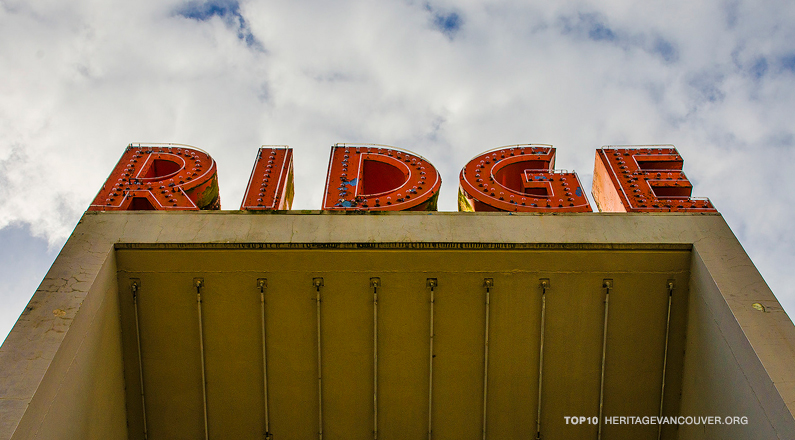


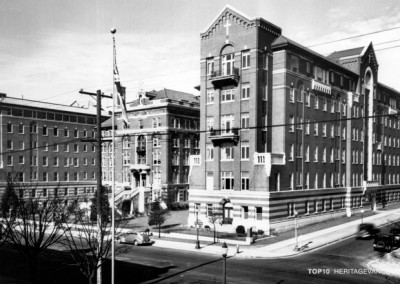
![4. Schools: Sir James Douglas Elementary (1910-12) [lost]](http://heritagevancouver.org/wp-content/uploads/2012/08/t10-school-douglas-795-400x284.jpg)
